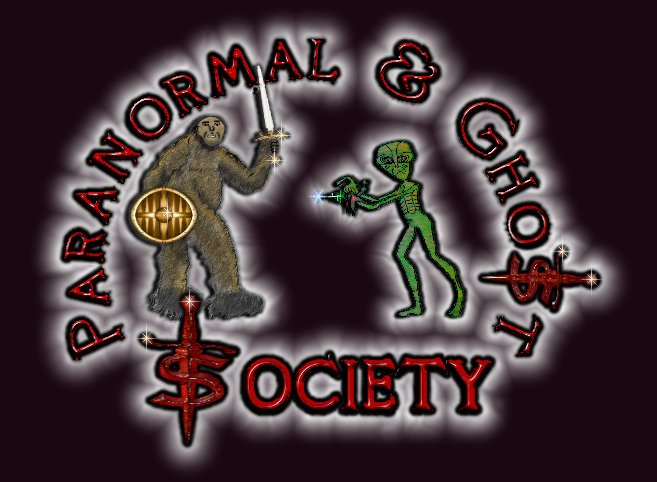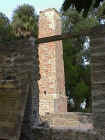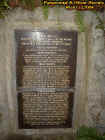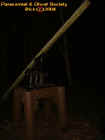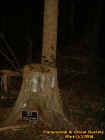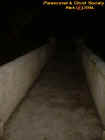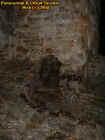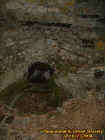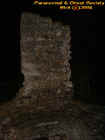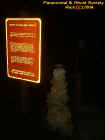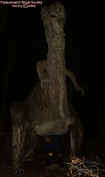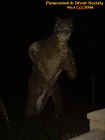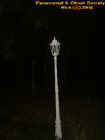|
|
||
|
In 1804 a man by the name Patrick Dean was granted roughly 1000 acres of land from the Spanish Government. He was one of the twenty families to receive such a large grant from the Bahamas where plantations were thriving during that time. For many years the plantation harvested Indigo as a revenue crop of course other crops were planted such as perhaps cotton and sugar cane. There was not much talk about the plantation from 1804 to 1932 however I can imagine that there were slaves both Indian and Black that worked this thriving plantation. In 1832 the Anderson family purchased the plantation and named it Dunlawton. They decided to raise sugar cane hence the fact they built a sugar mill to make molasses which later was put into barrels and stored upstairs in a curing room. Sometimes when the molasses oozed out from the wooden barrels it would seep through the floor into the vats below. After enough of it was collected they would ship to to the Indies for the production of Rum. The Dunlawton plantation had horse drawn sugar mill equipment and syrup boiling kettles. In 1835 the second Seminole War broke out where many plantations in the area were burned down mainly by King Philip and his son Coacoochee (Wildcat) There raids were very successful and they had eyes on burning down New Smyrna an example of this was days before the oldest lighthouse in Florida called Ponce De Leon Lighthouse was burned down. Of course at the time it was known as Mosquito Inlet. John and James Anderson left to St. Augustine's as they signed up with the Mosquito Roarers again there is that name popping up into one of our investigations. They did sign up under the militia as a way to defend there plantation from the Seminoles. Well upon there arrival to round up there belongings, cattle, equipment and valuables they were shocked to find the plantation was taken over by the Indians. They even had the cattle penned up and apparently were using the plantation as some sort of fort. A battle broke out and the Seminoles attack was to strong. The militia was under heavy fire and the militia had to retreat abandoning Dunlawton Plantation and the Sugar Mill. The brothers noticed that Coacoochee had shards or fragments from the lighthouse embedded in his turban. Perhaps the Seminole Chief and his son celebrated victory to soon. Because two years later in 1837 they were both caught near Ponce De Leon Inlet unfortunately to late as the Dunlawton Plantation was burned down. However the burning of various plantations was put to an end but a few years to late as many sugar mills and plantations like Bulow, Richard Oswald Plantation and The Dunlawton all fell to victims of fire. As well as I am sure many slaves, the caretaker and even family members were slaughtered as the skirmish broke out here. Also what did not help is after the burning down of Dunlawton the great freeze of 1836 killed all the Anderson's crop. By 1846 the plantation was somewhat rebuilt and restored. Very few plantations near by were so this was quite a rarity as most were abandoned from being burnt down. But the mill was rebuilt and was to be used as a Confederate Salt Works for the soldiers of the Civil War. They would process sea salt here. Then the Third Seminole War broke out in 1856 luckily this time the Dunlawton Plantation escaped a second devastation; however the area known as Dunlawton before it was Freemanville/Port Orange fell victim to many homesteads burned down. Eventually after this war the Civil War broke out the Dunlawton Sugar Mill and its surrounding area was used as a base camp. They particularly use to camp under a 250 year old tree called the Confederate Oak which I did notice while investigating. It is one of the largest trees in the county besides the Fairchild Oak which we already investigated before. After the Civil War the sugar mill lay abandoned and forgotten for many years until 1936. Most likely during this time underbrush, trees, foliage engulfed the entire property just like most of the ghost towns here in Florida. The land owned by J. Saxon LLoyd leased the land to a man by the name of Dr. Perry Sperber had M.D. "Manny" Lawrence in 1948 sculpt 20 concrete wire framed dinosaurs within the grounds of the Dunlawton plantation. In the 1950s the land was to be used as a theme park. It would be called "Bongo Land" which was named after a large Baboon housed on the grounds. Bongo Land would feature a little train to carry passengers around the park, the concrete dinosaurs a reproduced Seminole Indian village and of course the plantation as well. Due to the lack of funding and tourist eventually the park did close down. At the time theme parks were not very popular therefore Bongo Land was a failure. Over the years the concrete prehistoric creatures became weathered, some broke and today only four dinosaurs remain. Also most of them were removed and the larger ones were left standing. One of the dinosaurs the Stegosaurus is massive even to climb up on its back is a feat in itself. In 1963 J. Saxon LLoyd donated the land to Volusia County at this point on it would be used as sugar mill gardens for others to visit and enjoy. Surprisingly the 12 acres of land contains many trails and gardens today. Its beautiful fauna and giant oaks made it become a place of beauty and by 1973 it was registered into the National Registry Of Historic Places. Over the years however many have debated on who made the ruins before further research was done by archaeologist. At one time in 1894 it was called The Old Mission which was written in a newspaper by an anonymous writer. Since the ruins had some religious architecture structure it was even said they were built by Columbus. Later after 1894 a historian researcher by the name of Jeanette Connor indicated that the ruins were some Spanish Franciscan Mission called Atocuimi. But later it was found that the construction of the sugar mill was not from the 1700s but rather in 1830 by William Kemble and Cruger who were the builders of the Dunlawton Sugar Mill. Later in the mid 1900s the so called Spanish Sugar Mill was recognized as a Colonial English structure after many observations. Now today if you were to visit the Sugar Mill Botanical Gardens you would see things like stone bridges, coquina ruins, ancient trees, a pioneer garden which contains herbs that the settlers would use in the 1800s, an outdoor chapel for weddings, a human sun dial, and dozens of exhibits. One can hike in the woods and see equipment from the early 1800s along the hammock trail. There is even a library on sight which contains books about gardening and fauna. There is a gift shop even here. The gardens and coquina rock throughout them really is amazing. There is so many statues and the sugar mill ruins really take you a step back into history as these ruins are in much better shape then other plantations in the area we visited. Many butterflies, flora, fauna and birds native to Florida can be seen here. What really got me interested in this place is that my first day of arriving into Florida I visited here briefly. It was actually quite strange as this was the first haunted location I visited in this state and I could feel as a sensitive the energy that still remains here. I said to myself oh yeah someday I will return here to investigate this place and finally I have so in a way this investigation was perhaps the one I wanted to do more then anything since it was my first sugar mill I ever visited. After trying to relocate here after driving down from NY to see such beautiful ruins really reassured me that moving here would give me a chance to bring the public stories on such a place. This is a real serene place and over the months so many members asked me to investigate here or asked me if I had been here and now I can say yes our first investigation we explored just about everything the trails, ruins, gardens, bongo land etc but of course a return trip here would be nice because like most plantations the Dunlawton one is as haunted as the rest we have visited. © By Rick-AngelOfThyNight
|
||
|
Dawn Dusk
|
||
|
|
|
